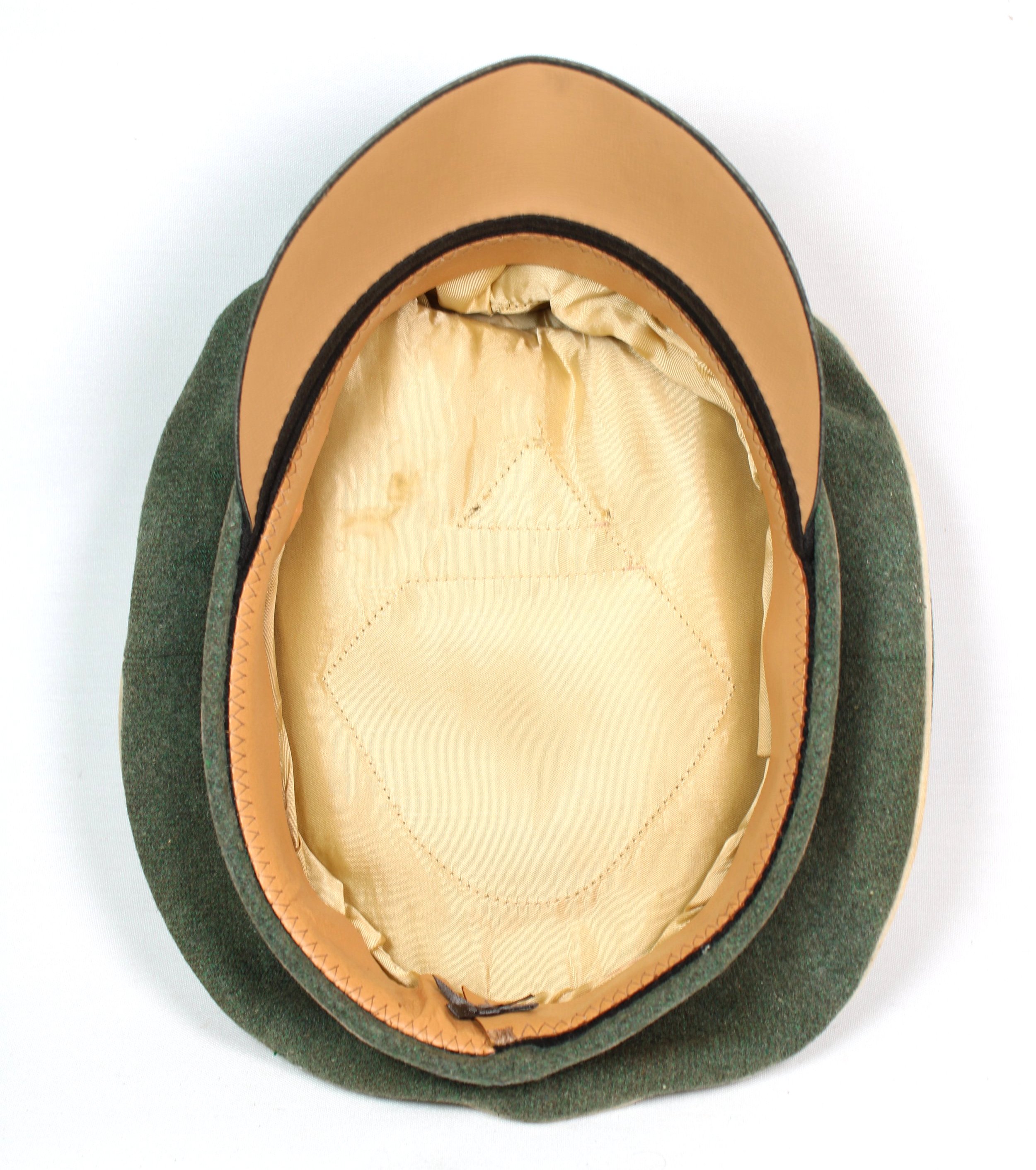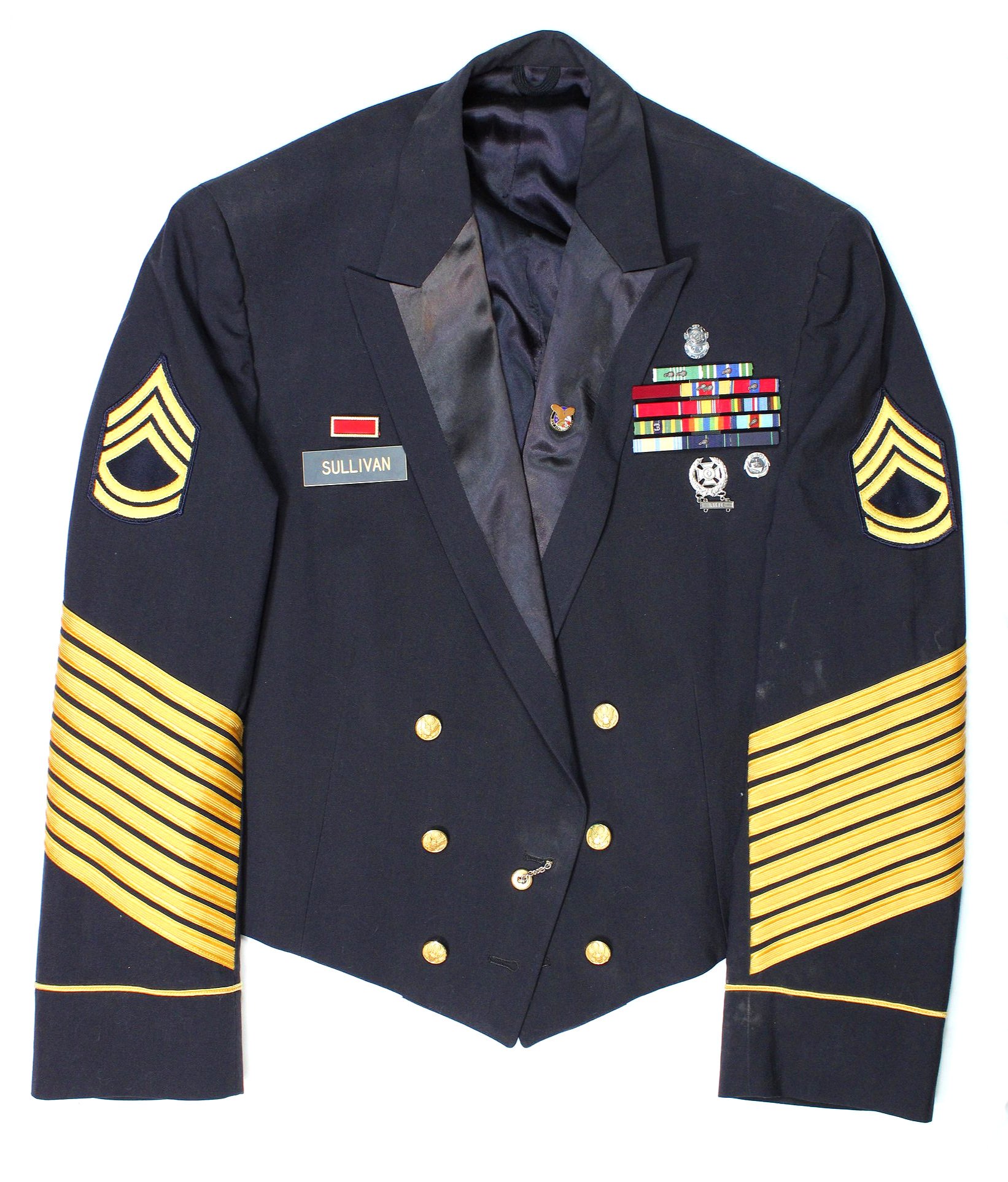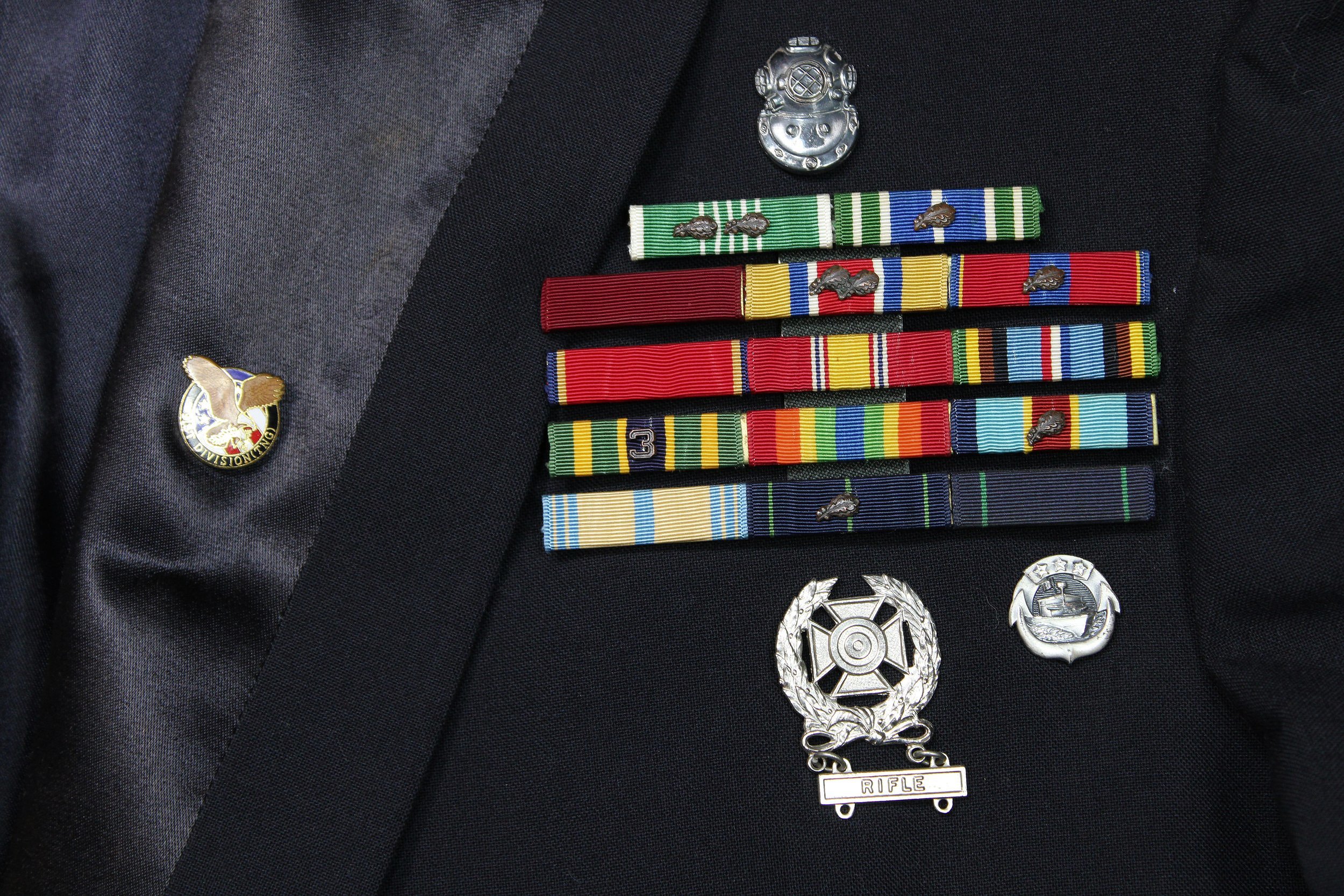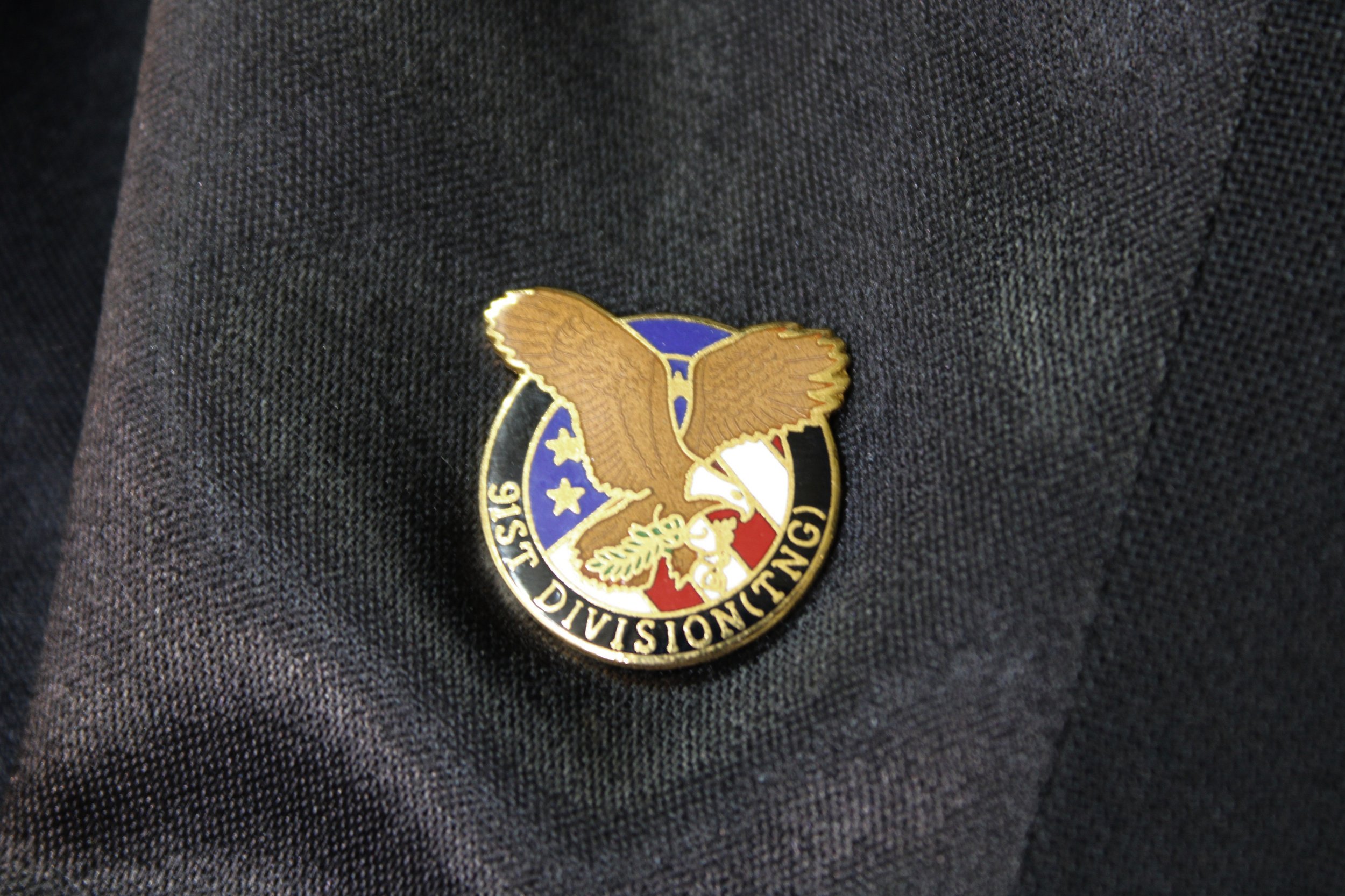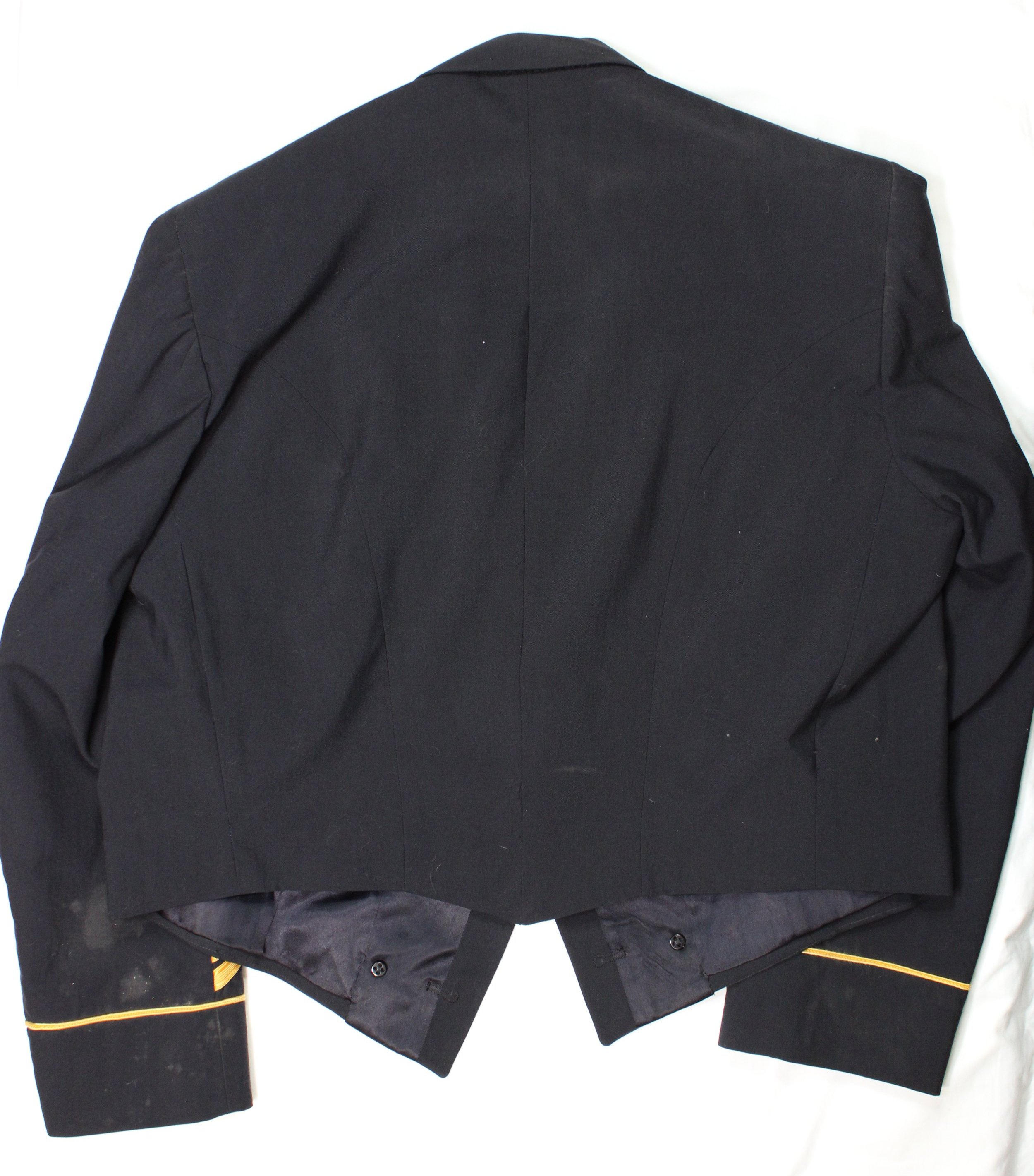(RARE) WWII Japanese 37mm Cannon Round 37x165R (IJA Type 94 anti-tank - Manually Loaded Semi Automatic
INERT, Japanese WWII Type 94 Tank/Anti-Tank armor piercing projectile and casing.
https://www.youtube.com/watch?v=j0nRgCfoBE0
This is a completely INERT example of a WWII Japanese 37mm Cannon Round, and is in compliance with the current BATF standards on inert ordnance. Not Available For Export.
The Type 94 37 mm quick-firing gun was an anti-tank gun developed by the Imperial Japanese Army. It was used in combat during the Second Sino-Japanese War and World War II. The Type 94's number was designated for the year the gun was accepted, 2594 in the Japanese imperial year calendar, or 1934 in the Gregorian calendar.
The Type 94 37-mm AT gun was introduced in 1936. The design originated as an improvement to the Type 11 37 mm infantry gun, which was also used as a primitive anti-tank weapon. However, its short bore, low muzzle velocity, short range and slow reloading time gave it a limited capacity against enemy armor. Development of a replacement began in July 1933 and was completed a year later. Initial testing indicated that a trained crew could fire up to 30 rounds per minute; however, Army planners felt that the initial design was too heavy. A modified design was tested in 1935, and actual production began in 1936; however, the weapon retained its original “Type 94” (imperial year 2594 = western year 1934) designation. Approximately 3,400 units were produced. It later was developed into the Type 1 37 mm anti-tank gun.
The Type 94 37mm AT guns were typically assigned in groups of four to combat infantry regiments. Each weapon was manned by a squad of 11 personnel, and was kept in contact with the regimental headquarters (typically up to 300 meters away) by field telephone or messenger runners. With the standard AP shell, it could penetrate 1.7 inches (43 mm) of armor at 500 yards (460 meters). The Army Technical Bureau continued to experiment with ways to increase muzzle velocity through 1941.
The Type 94 37mm AT gun was effective against Soviet lightly armored BT tanks in the Nomonhan Incident of 1939, but was considered obsolete against more advanced Allied tanks, such as the M4 Sherman, by the start of the Pacific War. However, it remained in service on most fronts in World War II for lack of a better replacement. The Type 1 47 mm Anti-Tank Gun was put into service starting in early 1942, and was intended to replace it, but was never available in large enough numbers to do so completely.
This 37mm round is in wonderful complete (without filler) condition with a solid projectile and no fuse. The round itself is all black with a white band, indicating the type of round. Much of the original paint is retained, with the expected chipping from use and storage. The round measures approximately 9” in length with a 1 ¾” base. The projectile is faintly stamped with the Japanese date: 4 六 十 昭. This marking is written right to left, and would be read: SHOWA (current reigning emperor) Juu-Roku Nen (16th year of reign - 1941) 4th month (April).
(FOR SALE IN THE USA ONLY!)
INERT, Japanese WWII Type 94 Tank/Anti-Tank armor piercing projectile and casing.
https://www.youtube.com/watch?v=j0nRgCfoBE0
This is a completely INERT example of a WWII Japanese 37mm Cannon Round, and is in compliance with the current BATF standards on inert ordnance. Not Available For Export.
The Type 94 37 mm quick-firing gun was an anti-tank gun developed by the Imperial Japanese Army. It was used in combat during the Second Sino-Japanese War and World War II. The Type 94's number was designated for the year the gun was accepted, 2594 in the Japanese imperial year calendar, or 1934 in the Gregorian calendar.
The Type 94 37-mm AT gun was introduced in 1936. The design originated as an improvement to the Type 11 37 mm infantry gun, which was also used as a primitive anti-tank weapon. However, its short bore, low muzzle velocity, short range and slow reloading time gave it a limited capacity against enemy armor. Development of a replacement began in July 1933 and was completed a year later. Initial testing indicated that a trained crew could fire up to 30 rounds per minute; however, Army planners felt that the initial design was too heavy. A modified design was tested in 1935, and actual production began in 1936; however, the weapon retained its original “Type 94” (imperial year 2594 = western year 1934) designation. Approximately 3,400 units were produced. It later was developed into the Type 1 37 mm anti-tank gun.
The Type 94 37mm AT guns were typically assigned in groups of four to combat infantry regiments. Each weapon was manned by a squad of 11 personnel, and was kept in contact with the regimental headquarters (typically up to 300 meters away) by field telephone or messenger runners. With the standard AP shell, it could penetrate 1.7 inches (43 mm) of armor at 500 yards (460 meters). The Army Technical Bureau continued to experiment with ways to increase muzzle velocity through 1941.
The Type 94 37mm AT gun was effective against Soviet lightly armored BT tanks in the Nomonhan Incident of 1939, but was considered obsolete against more advanced Allied tanks, such as the M4 Sherman, by the start of the Pacific War. However, it remained in service on most fronts in World War II for lack of a better replacement. The Type 1 47 mm Anti-Tank Gun was put into service starting in early 1942, and was intended to replace it, but was never available in large enough numbers to do so completely.
This 37mm round is in wonderful complete (without filler) condition with a solid projectile and no fuse. The round itself is all black with a white band, indicating the type of round. Much of the original paint is retained, with the expected chipping from use and storage. The round measures approximately 9” in length with a 1 ¾” base. The projectile is faintly stamped with the Japanese date: 4 六 十 昭. This marking is written right to left, and would be read: SHOWA (current reigning emperor) Juu-Roku Nen (16th year of reign - 1941) 4th month (April).
(FOR SALE IN THE USA ONLY!)
INERT, Japanese WWII Type 94 Tank/Anti-Tank armor piercing projectile and casing.
https://www.youtube.com/watch?v=j0nRgCfoBE0
This is a completely INERT example of a WWII Japanese 37mm Cannon Round, and is in compliance with the current BATF standards on inert ordnance. Not Available For Export.
The Type 94 37 mm quick-firing gun was an anti-tank gun developed by the Imperial Japanese Army. It was used in combat during the Second Sino-Japanese War and World War II. The Type 94's number was designated for the year the gun was accepted, 2594 in the Japanese imperial year calendar, or 1934 in the Gregorian calendar.
The Type 94 37-mm AT gun was introduced in 1936. The design originated as an improvement to the Type 11 37 mm infantry gun, which was also used as a primitive anti-tank weapon. However, its short bore, low muzzle velocity, short range and slow reloading time gave it a limited capacity against enemy armor. Development of a replacement began in July 1933 and was completed a year later. Initial testing indicated that a trained crew could fire up to 30 rounds per minute; however, Army planners felt that the initial design was too heavy. A modified design was tested in 1935, and actual production began in 1936; however, the weapon retained its original “Type 94” (imperial year 2594 = western year 1934) designation. Approximately 3,400 units were produced. It later was developed into the Type 1 37 mm anti-tank gun.
The Type 94 37mm AT guns were typically assigned in groups of four to combat infantry regiments. Each weapon was manned by a squad of 11 personnel, and was kept in contact with the regimental headquarters (typically up to 300 meters away) by field telephone or messenger runners. With the standard AP shell, it could penetrate 1.7 inches (43 mm) of armor at 500 yards (460 meters). The Army Technical Bureau continued to experiment with ways to increase muzzle velocity through 1941.
The Type 94 37mm AT gun was effective against Soviet lightly armored BT tanks in the Nomonhan Incident of 1939, but was considered obsolete against more advanced Allied tanks, such as the M4 Sherman, by the start of the Pacific War. However, it remained in service on most fronts in World War II for lack of a better replacement. The Type 1 47 mm Anti-Tank Gun was put into service starting in early 1942, and was intended to replace it, but was never available in large enough numbers to do so completely.
This 37mm round is in wonderful complete (without filler) condition with a solid projectile and no fuse. The round itself is all black with a white band, indicating the type of round. Much of the original paint is retained, with the expected chipping from use and storage. The round measures approximately 9” in length with a 1 ¾” base. The projectile is faintly stamped with the Japanese date: 4 六 十 昭. This marking is written right to left, and would be read: SHOWA (current reigning emperor) Juu-Roku Nen (16th year of reign - 1941) 4th month (April).
(FOR SALE IN THE USA ONLY!)











